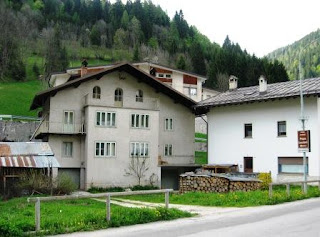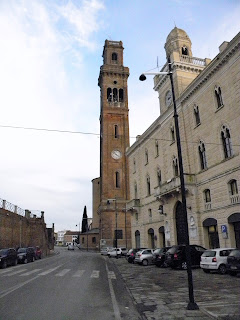Sudden end to the reign of ‘The Smiling Pope’
 |
| Pope John Paul I making his weekly address to the crowds outside St Peter's |
John Paul I died on this day in 1978 in Rome, having served for just 33 days as Pope.
His reign is one of the shortest in Papal history and resulted in the most recent ‘Year of Three Popes’, which hadn’t happened since 1605.
John Paul I was also the most recent Pope to be born in Italy, his death ending the succession of Italian pontiffs that started with Clement VII in 1523.
Pope John Paul I was born Albino Luciani in 1912 in a small town then known as Forno di Canale, in the province of Belluno in the Veneto.
The son of a bricklayer, he decided to become a priest when he was just ten years old and was educated first at the seminary in Feltre and then in Belluno.
After Luciani was ordained, he taught for a while at the seminary in Belluno before going to Rome to work on a Doctorate in Sacred Theology.
He was appointed Bishop of Vittorio Veneto by Pope John XXIII in 1958. The next Pope, Paul VI, made him Patriarch of Venice in 1969 and then Cardinal Priest of San Marco in 1973.
 |
| Albino Luciani in 1959, soon after he was appointed Bishop of Vittorio Veneto |
The new Pope chose the name John Paul to honour both of his predecessors, Pope John XXIII and Pope Paul VI. It was the first time in history a Pope had chosen a double name.
It was suggested at the time that his election had been a compromise to satisfy rival camps among the Cardinals.
Pope John Paul I died during the night of 28 September 1978 and was found the following morning lying in his bed with a book open next to him and his reading light on. According to a doctor at the Vatican he had died at around 11 pm of a heart attack.
After his funeral in St Peter’s Square, the Pope’s body was laid to rest in a tomb in the Vatican grottoes.
His successor Cardinal Karol Wojtyla chose the name Pope John Paul II and paid tribute to his predecessor’s warm qualities.
In Italy John Paul I is remembered as ‘The Smiling Pope’, Il Papa del Sorriso.
Pope John Paul I was against Communism but was a friend to Muslim people and defended their right to build Mosques in Italy.
The suddenness of his death and the discrepancies in statements issued by the Vatican about it resulted in a number of conspiracy theories being aired. Several books were published and films and plays were produced based on the story.
David Yallop’s book, In God’s Name, puts forward the theory that the Pope was in danger because of corruption in the Vatican Bank, while Malachi Martin’s book, Vatican: A Novel, suggests the Pope was murdered by the Soviet Union because he was opposed to Communism. Other books and films propose alternative theories.
 |
| The house in Canale d'Agordo in which Albino Luciani, who would become Pope John Paul I, was born |
Canale d’Agordo, the birthplace of John Paul I, is a small town in the province of Belluno in the Veneto, which was previously known as Forno di Canale. The Albino Luciani Museum, which displays documents, personal items and objects associated with the life of Pope John Paul I, opened last month in the old town hall in Canale d’Agordo.
Travel tip:
Belluno, where Luciani both studied and taught in the Seminary, is about 100 kilometres north of Venice. Named Alpine Town of the Year in 1999, it is the most important city in the area of the Eastern Dolomites and has some fine architecture There are picturesque views of the surrounding countryside to be seen from the 12th century Porta Ruga at the end of the main street and from the Campanile of the 16th century Duomo.
(Photo of John Paul's birthplace by Sibode 1 GFDL)
Books
In God's Name, by David Yallop
Vatican: A Novel, by Malachi Martin
Home



